|
25th February
Ardmore Point
I was on my own this week once more as John couldn’t make the trip. With the
brighter weather more likely in the west I headed for Ardmore Point, west of
Dumbarton. Of course as I passed through Dumbarton I visited Morrisons for a
quick breakfast. I’m glad to report that it was very fine (10/10) and set me up
for the plod around the rocky and usually muddy Ardmore. This peninsula on the
River Clyde is privately owned land but has a popular nature trail and is also
a favourite destination for fishermen, dog walkers and wild campers. The Point
has a RIGS status (Regionally Important Geographical Site) due to unique rock
formations that includes an exposed sea cliff . It also has a bit of archaeology (see here).
The tide was low when I arrived
and the bright sun was not in a favourable position but I picked my way
through the seaweed and slippy rocks out to the water’s edge, partially
hidden from the birds there by a low, seaweed-covered ridge. As I
looked across from behind the ridge I could see well lit Oystercatchers
and a Curlew. But I was suddenly startled to discover that Teal and
Wigeon were just behind the ridge. The equally startled birds took off,
providing me with the opportunity to snap some flight shots.
Curlew
|
Oystercatcher
|
Teal
|
Wigeon
|
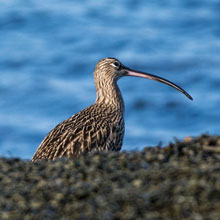
|
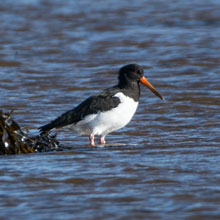
|
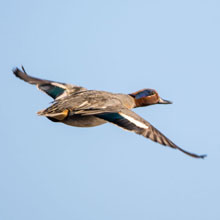
|
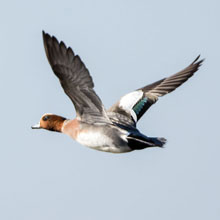
|
As I returned to the main path I
noticed Canada Geese behind where I had been standing. I would see more
of that flock as my walk progressed. Just as I reached the path, a wee
Dunnock was foraging amongst the waste vegetation that littered that
part of the shore. Then I was drawn to a wooded area attracted by the
unmistakable call of a Greenfinch perched high on the leafless branches
of a tree. It didn’t notice me as the sun was behind me as I very
slowly approached it. After a short time a female joined him on the
same tree, no doubt attracted by the persuasiveness of his song. As I
pressed on with my journey I noticed that extensive patches of Gorse
were starting to bloom. (Although an old proverb states, "When gorse is
out of bloom, kissing's out of season” leads us to believe that Gorse
is in flower all year round, it does flower more abundantly from Spring
to Autumn.)
Canada Goose
|
Dunnock
|
Female Greenfinch
|
Gorse
|
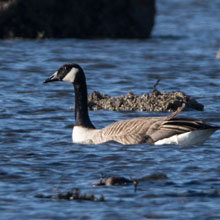
|
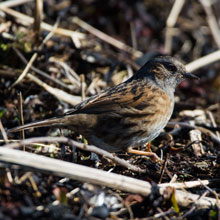
|
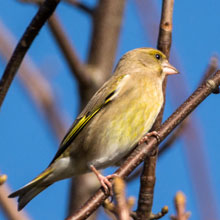
|
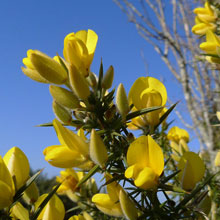
|
As I was taking pictures of the
Gorse, I put up a nervous Blackbird and then a Song Thrush. They each
found sanctuary high in the branches of distant trees where they could
keep track of my threatening movements. I left them and, to avoid the
very muddy paths, decided to travel around the extremes of the Point by
carefully, and slowly, scrambling over the rocky shore. Straight away I
heard a Wagtail’s chirps a bit ahead of me. As I waited, the Grey
Wagtail obliged by posing on top of the yellow algae-coated rocks.
During a brief “comfort” visit to the bushes I came upon a patch of
Common Snowdrops before returning to the rocky shore.
Blackbird
|
Song Thrush
|
Grey Wagtail
|
Common Snowdrop
|
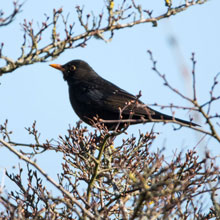
|
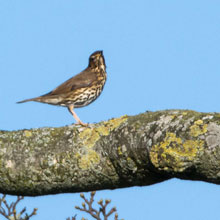
|
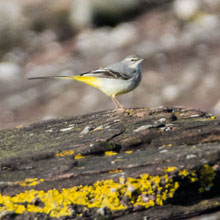
|
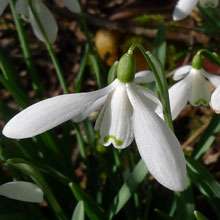
|
As I was edging towards a pair of Mallards napping on a large rock, a small
group of beautifully illuminated Wigeon came into view. I managed great shots of a female (below)
and drake (see “Pictures of the Week” below). To the east I spotted a Common
Seal lounging on a shallow rock, until it noticed me and took to the water. As
I pressed on a distant male Eider was following its mate
Mallard
|
Female Wigeon
|
Common Seal
|
Eider
|
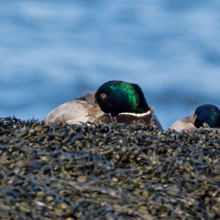
|
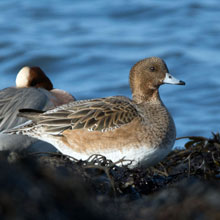
|
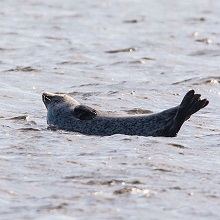
|
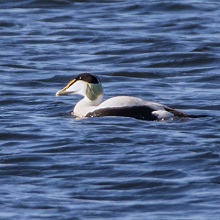
|
A solitary
Black Guillemot surfaced close to the Eiders, and not far from them a
male Goldeneye drifted by. In my eagerness to clamber over the rocks to
get a bit closer to those birds I disturbed a Grey Heron from its
hidden stance. It flew a wide horseshoe-shaped path around me,
conveniently passing through a large selection of lighting angles -
great for the camera. To cap things off for that stage of the walk, not
long after the Heron, as I came back onto the track, a Buzzard glided
overhead into the woods.
Black Guillemot
|
Goldeneye
|
Grey Heron
|
Common Buzzard
|
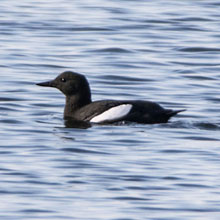
|
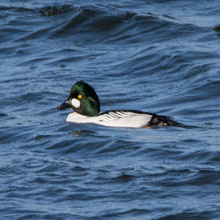
|
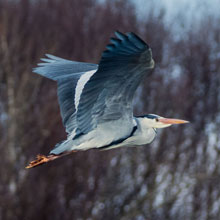
|
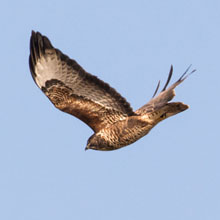
|
As I
nearer the end of the walk, approaching the fenced path across the
field to the road where my car was parked, I noticed a very handsome
male Shelduck feeding on the North Bay sands. I managed to sneak off
the path to the sands’ edge without disturbing the bird so allowing me
a chance to get a few relatively good shots. Also on the sands, east of
the Shelduck, a flock of Canada Geese took off (not me this time - a
pair of walkers in fluorescent pastel shades of green and pink had
caught their eyes) over to the South Bay. As I examined my photos after
the walk I noticed that among the Canada Geese there was a Pink-footed
Goose. As the photograph below shows, it was an easy spot as it’s
backlit pink feet really stand out. My last picture of the day was of
the early flowering plant, Coltsfoot, a true sign that Spring isn’t too
far off. The plant has the folk-name of "son before father" due to its
habit of flowering before its leaves have formed. Its horse hoof-shaped
leaves, when they appear, give the plant its common name.
Shelduck
|
Canada Goose
|
Pink - footed Goose
|
Coltsfoot
|
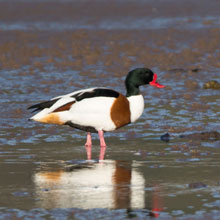
|
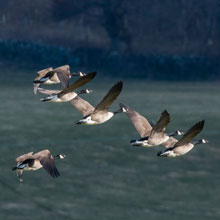
|
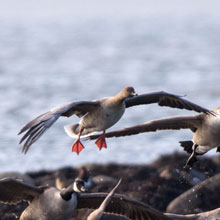 |
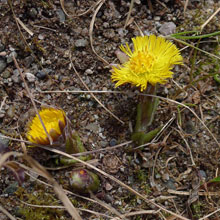
|
I forgot
to mention above that although the sun was shining for most of the
walk, the wind was very cold. So it was a bit of a relief to get back
to the car for a wee cup of warm tea and a chocolate biscuit. I
returned home very satisfied with a great collection of sightings.
Pictures of the Week:
Teal
|
Greenfinch
|
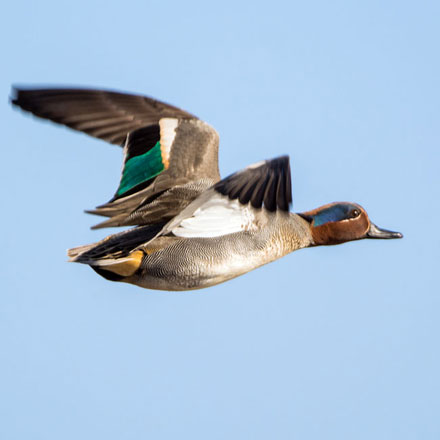
|
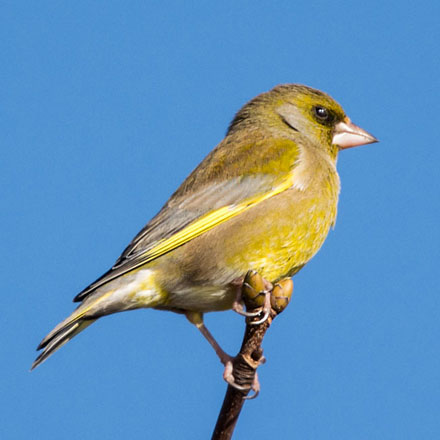
|
Wigeon
|
Shelduck
|
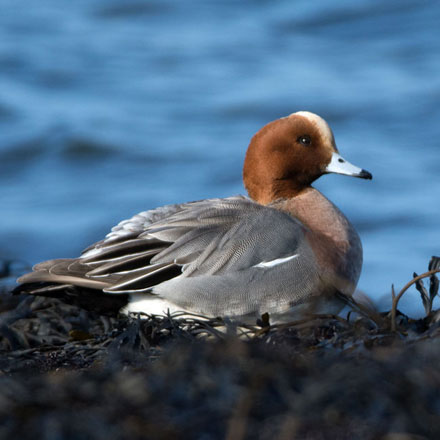
|
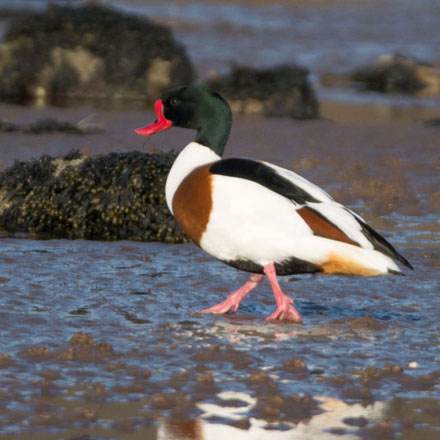
|
18th February 2018
Musselburgh
I was on my own this week again as John had family commitments. The
weatherman had forecast a depressing covering of cloud over the whole
of the
Central Belt of Scotland with a lighter covering over the East - so it
was
Musselburgh then! I had a lovely breakfast in Dalkeith Morrisons
(10/10) and
then I drove to the mouth of the River Esk where a pair of Canada Geese
were
there to meet me. I was followed around the Cadet Halls by an
inquisitive
Black-headed Gull that was probably after some easy food. As I reached
the
seawall I saw that the tide was very low but that there were many birds
on the
shore by the river. Mallard were dabbling on the river edges for water
invertebrates, seeds, shoots, roots, while Goldeneye were diving for
crustaceans, molluscs, fish eggs, insects and aquatic plants.
Canada Goose
|
Black - headed Gull
|
Mallard
|
Female Goldeneye
|
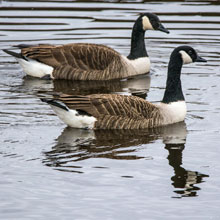
|
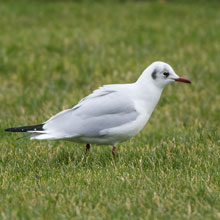
|
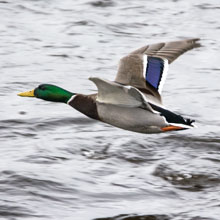
|
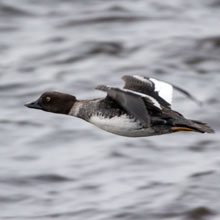
|
A few Wigeon, with a similar diet to the Mallards, were foraging in the same
sort of places. A large male Mallard was sitting on a rock, preening its
plumage. It was the time of year when birds were turning their thoughts to
reproduction. Apparently though, according to an article I read in the New
Scientist,
male Mallards commonly attempt to inseminate females against their will. But,
surprisingly, females’ vaginas have design features that prevent unwanted sperm
from reaching their eggs. Several pouches within their vaginas present “blind
alleys” that trap the rogue fluids, so acting as a form of natural
contraception. A Curlew strode past the naughty Mallard occasionally probing
the sand for invertebrates and crabs. I noticed that a fair bit of courting was
going on amongst the Goldeneye- another duck guilty of forcing their attentions
on their females.
Wigeon
|
Mallard
|
Curlew
|
Goldeneye
|
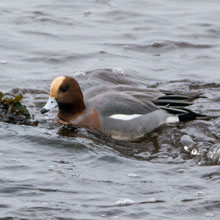
|
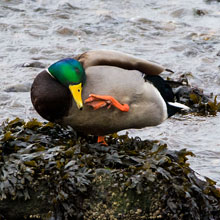
|
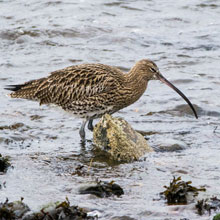
|
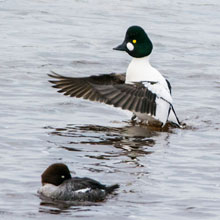
|
A few male birds circled an apparently disinterested female. Periodically,
they vigorously threw their heads back over their tails while emitting whooping
calls - but their behaviours showed no signs of turning to violence.
Further around the shore a Bar-tailed Godwit was quite close in, digging its
bill deep into the sand for vegetation, insects and crustaceans. A male Eider
and a Cormorant flew past as conditions got rather more dull.
Goldeneye
|
Bar - tailed Godwit
|
Eider
|
Cormorant
|
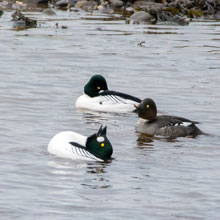
|
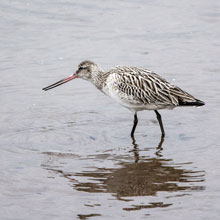
|
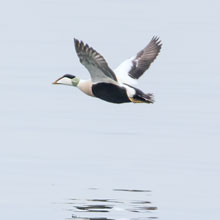
|
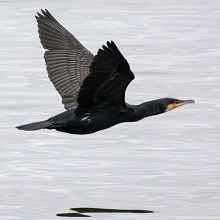
|
I was surprised to hear the very familiar tones of an ascending Skylark. It
was a bit early in the year, but there it was. I managed a couple of record
shots of the bird in the air and followed its path as it landed, so also
managed a shot of the Skylark on the ground. Three Curlews flew overhead
heading inland and out to sea there was only a solitary Velvet Scoter.
The Scrapes were a bit devoid of birds. Only a few Teal were providing
decent photo opportunities so I set off retracing my steps back to the car. A
friendly Robin warbled to me as I passed it on my way out of the Scrapes (see
“Pictures of the Week” below). At the seawall I met a friendly old gent who had
attracted a Carrion Crow onto the seawall by tossing it dog treats, much to the
frustration of his pet Alsation. A nosey Rock Pipit was hopping on and off of
the wall but as I photographed these birds I noticed I was being watched by a
Common Seal floating on the waves some 30m away.
Teal
|
Carrion Crow
|
Rock Pipit
|
Common Seal
|
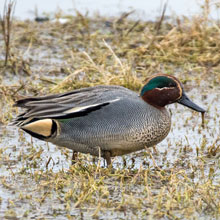
|
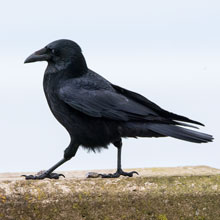
|
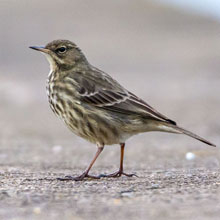
|
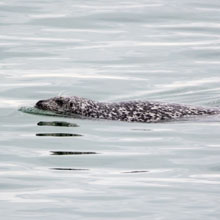
|
The Seal retreated a bit further from the wall. Very many Oystercatchers had
by this time started to fly in from their feeding expeditions on the seashore.
The tide was now fairly high and they preferred to roost in the relative safety of
the Scrapes. My next encounter with courting birds was with four Red-breasted
Mergansers, one female with three males posing around her. The males lifted
their heads through almost 90 degrees and then dipped their beaks into the
water. Once again the female showed little reaction.
As I plodded on westwards I heard the calls of Long-tailed Ducks and the
spotted a group of about five males pursuing a very reluctant female. They were
very active and before long the fleeing female had drawn the group to about 20m
from the seawall. Occasionally she dived to attempt an escape from the males’
attentions - but they followed her down below the surface. There was no
getting away from them. I suspect that the males would drop out one-by-one
leaving the most persistent to mate with the, by then, very tired female.
It had brightened up a bit as I
reached the car and I took photos of the panorama towards the West. My
final picture of the day was of a Cormorant in breeding plumage that
surfaced very near the seawall I was quite relieved he didn’t seem to
have a female near him - I had seen quite enough courting rituals for
one day!
Portobello
|
Arthur's Seat
|
Calton Hill
|
Cormorant
|
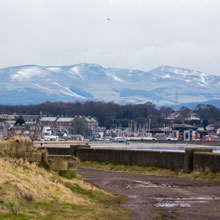
|
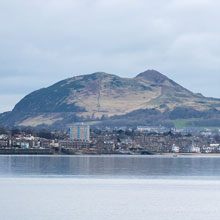
|
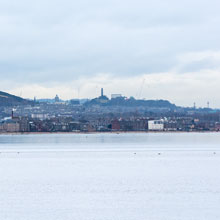
|
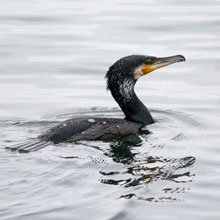
|
When I set off on this trip I genuinely thought I wouldn’t see very much
given the overcast conditions. Well, while it is true to say I didn’t get top
quality photos, it is equally true that I had witnessed and captured some very
interesting sights. It just goes to show - it’s all about getting out there.
The weather conditions are a challenge to the photographer, but one that can be
overcome. I enjoyed my tea and biscuit before returning to the damper gloom of
the west.
Carrion Crow
|
Common Seal
|
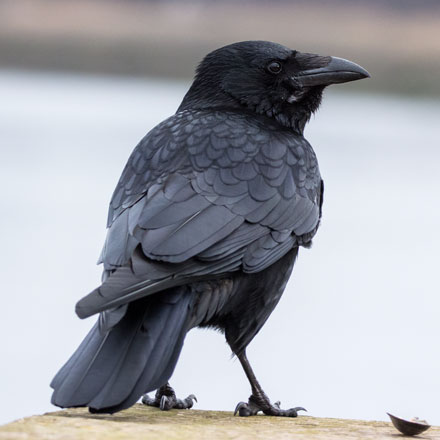
|
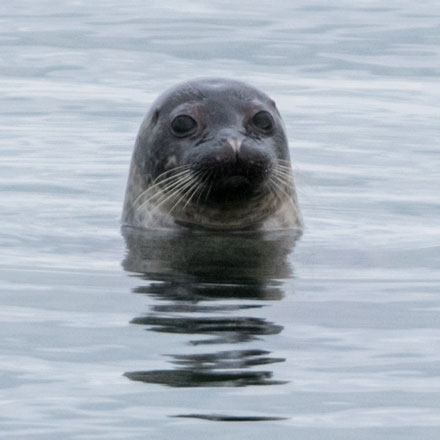
|
Long - tailed Duck
|
Robin
|
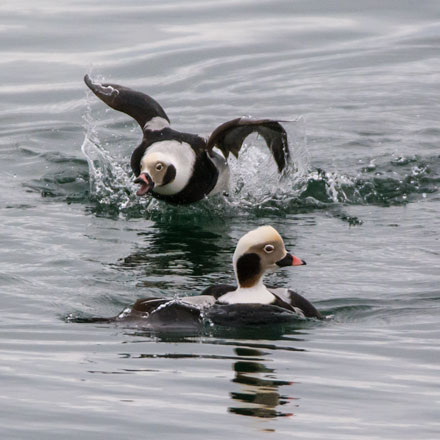
|
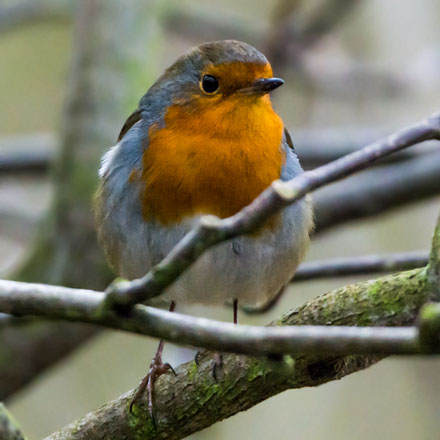
|
11th February 2018
Skateraw and Belhaven Bay
I was on my own last Sunday as
John had an important Birthday Party to attend. With sunny weather
predicted in the east I set course for Skateraw, East Lothian, where a
Water Pipit has been reported. I stopped into Dalkeith Morrisons for a
Wee Scottish Breakfast. After last week’s poor brekky I have to report
that Dalkeith showed how it should be done – delicious, on time and
excelled service, and, I got a table with a comfy seat: 10/10! My
euphoria was dashed though when I arrived at Skateraw when I saw how
many dog walkers there were at this small and relatively remote beauty
spot. I tried for a time to locate the Water Pipit but the birds were
spooked by the rampaging dogs. I did though catch a picture of one of
the spooked birds, a Curlew as it flew overhead. A couple of Rock
Pipits tweeted my attention to some patches of seaweed by the old
Limekilns but they were very restless. Some Redshanks sheltering on the
rocks managed to find some peace there. I walked round the bay to
Chapel Point. I’m glad to say it was free of dogs and people, but not
birds. As I sat on my stool a few Racing Pigeons sped past. I think
they may have been from one of the houses in Skateraw hamlet.
Curlew
|
Rock Pipit
|
Redshank
|
Racing Pigeon
|
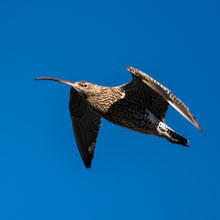
|
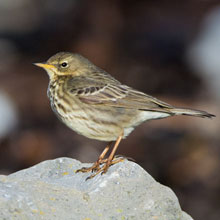
|
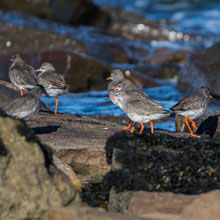
|
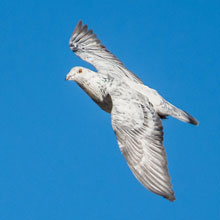
|
As I sat at the Point sheltered from the cool
wind but warmed by the winter sun I was able to get some shots of the
many birds that were coming and going. There were quite a few
Black-headed Gulls and on the rocks a few Rock Pipits were foraging for
food. Three Mallards flew past, two males and a female, heading for
better shelter west of the Point. I nearly got a snap of a Wren but it
was too nippy for me!
Black - headed Gull
|
Rock Pipit
|
Mallard
|
Wren
|
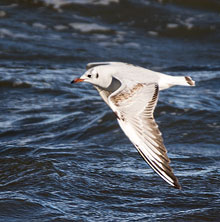
|
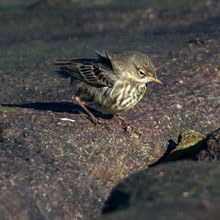
|
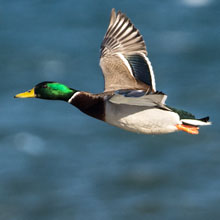
|
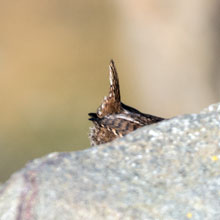
|
The Barns Ness Lighthouse was
clearly visible from the Point. A male Goosander passed me flying
towards it followed by a beautiful lit Carrion Crow. I decided then to
return to the car and drive to Belhaven, west of Dunbar. As I drove up
the brae to Skateraw I passed a field of Curlew. I parked the car and
shimmied up the grassy banks to sneak a few shots.
Further up the hill I found a
large flock of Rooks feeding on a sprouting crop field. I had quick
look for Tree Sparrows at the houses but without any success. At
Belhaven Bay I was greeted by a wee Goldfinch singing his head off. I
was looking for Snow Buntings but initially they were nowhere to be
seen. However there were many familiar and well illuminated birds in
the Bay, Black-headed Gulls, and close in, dabbling furiously, Teal.
Rook
|
Goldfinch
|
Black - headed Gull
|
Teal
|
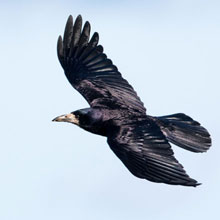
|
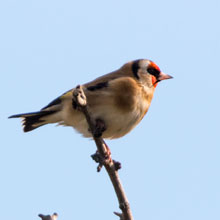
|
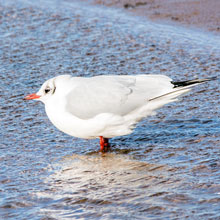
|
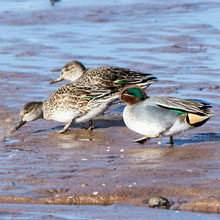
|
As the Bay slowly filled with
seawater as the tide advanced, and the Teal moved between the salt
pools, the sands appeared blue as the waters reflected the clear azure
sky. I photographed a handsome Redshank that, I found out later, had
been tagged and flagged in 2014 in the NE of Scotland. As I returned to
the car, thinking I was finished for the day, I spotted some small,
light-coloured birds fluttering about some 150m away between the burn
and the sea. So I walked past the car and over the steel bridge over
the Burn and walked slowly towards the birds. As I got closer I very
quickly saw they were indeed Snow Buntings and managed to get to within
about 30m of the flock before they were put up by a passing jogger and
his dog. Another bloody dog-walker spoiling it for the birder!
Teal
|
|
Redshank
|
Snow Bunting
|
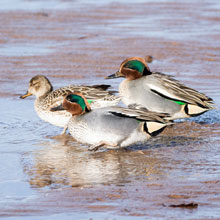
|
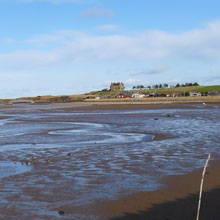
|
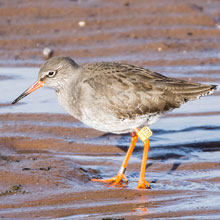
|
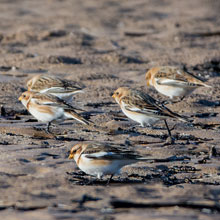
|
Although I got a few nice photos
of “familiar “ birds, I think the Snow Buntings made the day. The nice
weather helped too, and tea and a chocolate biscuit helped round off
the nice feeling of satisfaction.
Pictures of the Week
Mallard
|
Rook
|
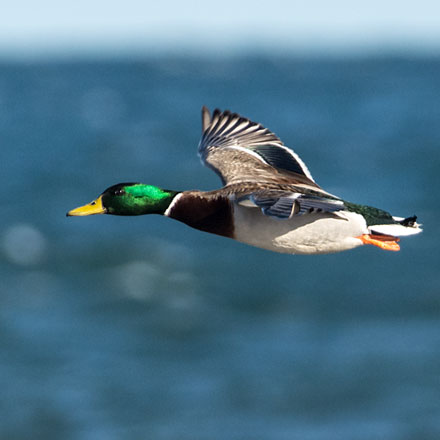
|
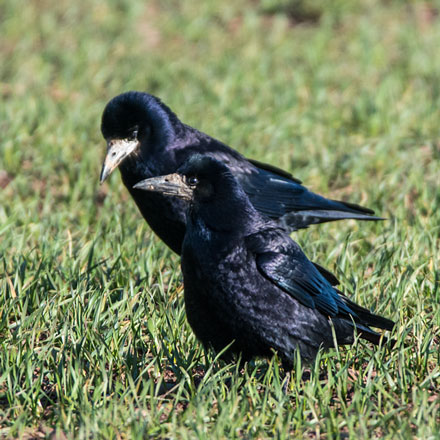
|
Teal
|
Snow Bunting
|
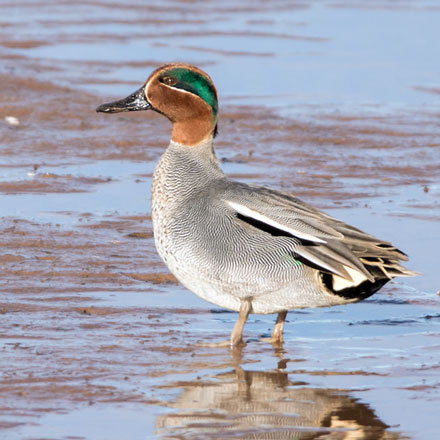
|
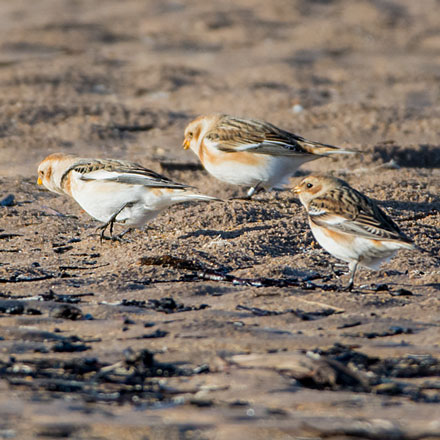
|
4th February 2018
Pow Burn and Troon Harbour.
This week we took ourselves “doon
tae” Troon to check out the reported Glaucous Gull. Thankfully the
weather predictions were all good, so although it was overcast first
thing, we set off filled with optimism. By the time we got to the
Kilmarnock ASDA cafeteria the sun was breaking through. We were however
less happy with our breakfasts which were cold, skimpy and poorly
cooked (5/10). The food there is usually much better. As we were
passing Prestwick it seemed a good idea to have a wee look for anything
interesting along the Pow Burn. When we arrived there we were surprised
to see there was noisy building work being carried out on the periphery
of Prestwick Golf Course. We hoped that birds would not be scared by
the building activities. A very big grey cloud had covered the majority
of the sky, though the sun was fighting to get through. There were few
pesserines showing, but on the Burn some Black-headed Gulls were
resting. And before too long the cloud had broken and I spotted a pair
of Teal basking in sunlight.
|
Black - headed Gull
|
Female Teal
|
Drake Teal
|
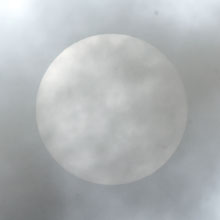
|
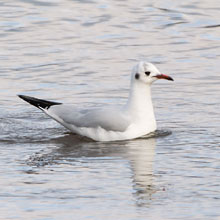
|
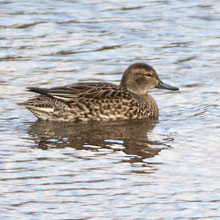
|
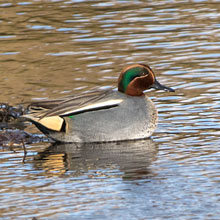
|
Midstream, a lone Curlew had
spotted me and was shuffling off towards a large flock of Redshanks
roosting on the bank. As we reached the Burn mouth, a Common Gull was
diving into the water but didn’t seem to catch anything. To the south,
Ayr was still looking gloomy
Curlew
|
Redshank
|
Common Gull
|
Ayr
|
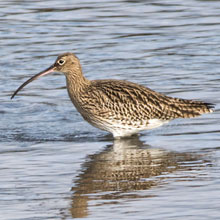
|
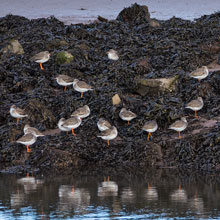
|
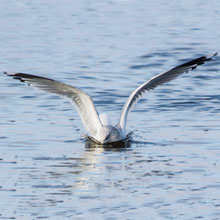
|
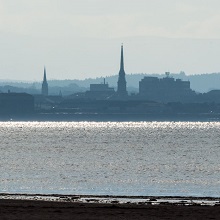
|
As we walked along the beach we
noticed a few Ringed Plovers on the water’s edge. One conveniently
posed for a few seconds allowing time for a couple of shots. There was
a large flock of Wigeon about 30m offshore. They weren’t up to much.
They were just bobbing up and down as the waves passed. To the north,
Troon seemed to be seeing a lot of the sun, or so I hoped as we were
going there soon. A passing jogger and his dog spooked the Wigeon and
they went up and settled about 400m to the south.
Ringed Plover
|
Wigeon
|
Troon
|
Wigeon |
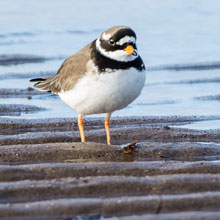
|
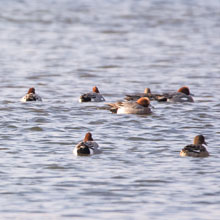
|
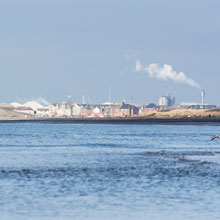
|
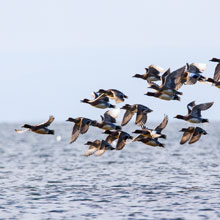
|
As we moved along the dunes our
attention was drawn to a nippy aeroplane performing some daring
manoeuvres as it passed us heading towards Prestwick Airport. A
startled Curlew fled along the banks of the Pow Burn. We returned to
the car and zoomed the short distance north to Troon Harbour. As I left
the car I was being watched carefully by a beautiful adult Herring Gull
as it sat perched atop a lamppost basking in the now constantly bright
sunlight. On the rocky shoreline I could see many birds including
several Cormorants drying their feathers in the heat of the sun.
|
Curlew
|
Herring Gull
|
Cormorant
|
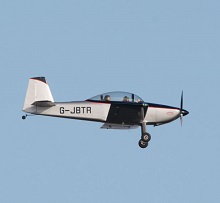
|
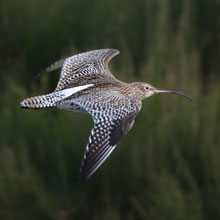
|
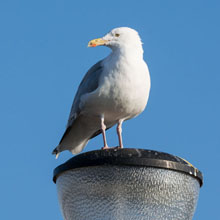
|
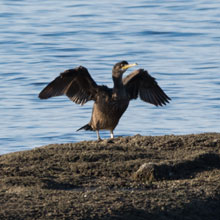
|
It didn’t take very long to locate
the Glaucous Gull – all I had do was to follow the lines of sight of
the spotting scopes of the few birders already present! It was a large
bird with pale plumage, pink legs and feet and whose beak was pink with
a dark tip. It’s name is derived from Latin, and means literally
“bluish grey of green or dull grey”, a description that didn’t quite
match the bird we were looking at as it was a younger bird. It wasn’t
shy and and was certainly enjoying the many chips with which the
birders we enticing it, and the other, more common birds. After taking
far too many shots of the Glaucous Gull, we turned our attentions to
the rocky shoreline and immediately spotted a large flock of small
waders resting on the rocks. They were predominantly Ringed Plovers,
but I decided to climb down onto the rocks for a better look. As I was
sitting on a rock observing the Plovers, a foraging Rock Pipit passed
me only metres away, providing an excellent photo-opportunity.
On my way along the beach, I was
being watched by a chirping male House Sparrow, its fine plumage was
well illuminated by the strong sunlight, and a singing Starling (see
Pictures of the Week). The tide was coming in but the rocks were still
a hive of activity with Cormorant and Shag coming and going as they
took time off from diving for fish to dry their feathers, and Herring
and Black-headed Gulls hanging about for opportunities to steal each
other’s tasty morsels. Amid the gulls a pair of Eider seemed to have
drifted into the mayhem, finding themselves unable to dive without
harassment. Actually I think the female Eider was trying to escape the
attentions of the male and was using the crowded scene to lose her
amorous pursuer. A passing pair of jet skiers didn’t seem to scare the
birds – perhaps the birds were used to such disturbances.
House Sparrow
|
Eider
|
Cormorant
|
|
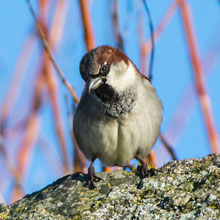
|
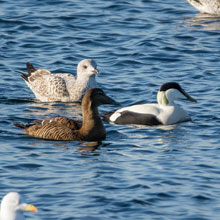
|
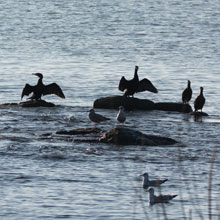
|
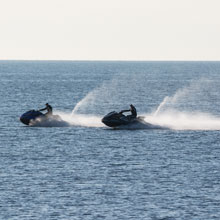
|
At the other end of the speed
spectrum a large boat of rowers were cutting the waters to the
northwest of Troon. It was the “Marr Voyager” of the Troon Coastal Rowing Club who
meet at weekends. John then pointed out that there were a few
Sanderling with the Ringed Plovers. I located one and got a distant
picture. Beside it was a Herring Gull with a orange ring (A:B24; see
Pictures of the Week). A juvenile Herring Gull was being chased by
other gulls attempting to rob it of what it had in its beak – a
Starfish. Our final picture was of a Turnstone turning stones in
amongst the Ringed Plovers before it and all of the small waders were
put up by a family playing with a ball on the sand.
Troon Coastal Rowing Club
|
Sanderling
|
Herring Gull
|
Turnstone
|
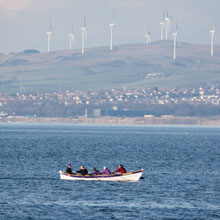
|
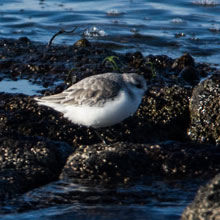
|
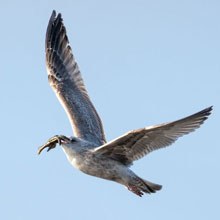
|
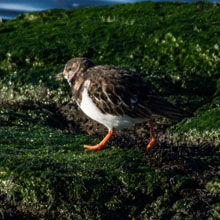
|
So it was a very enjoyable trip.
The weather was bright and sunny, the birds were plentiful and obliging
and we got photographs of the Glaucous Gull – mission accomplished! We
celebrated with a cuppa and a pair of chocolate fondant eclairs, each!
It seemed a shame to leave the sunny shores of Troon but I suppose that
was a much better sentiment than feeling you’d rather be at home.
Pictures of the week:
Glaucous Gull
|
Herring Gull
|
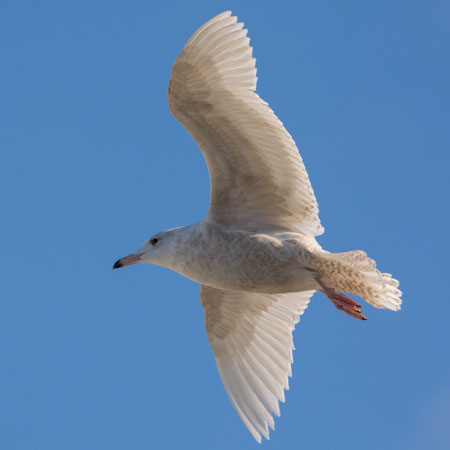
|
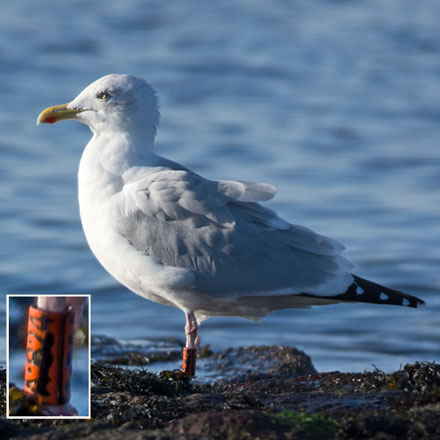
|
Ringed Plover
|
Starling
|
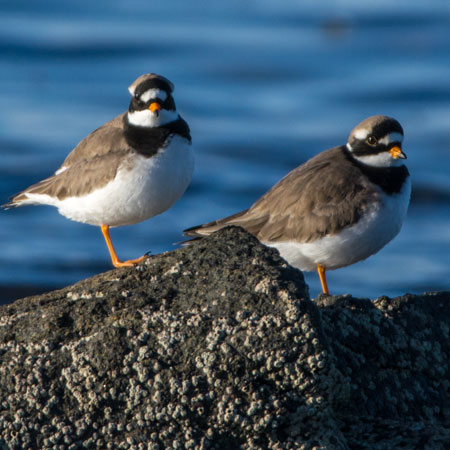
|
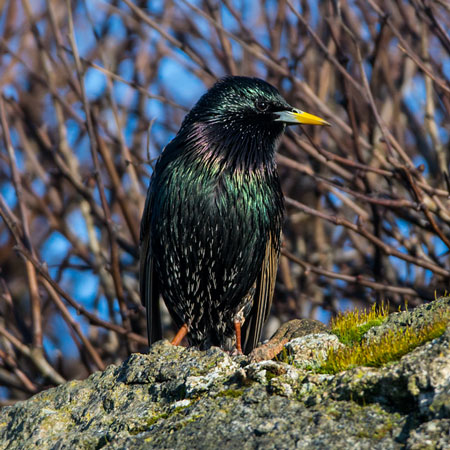
|
Back To Top
|

